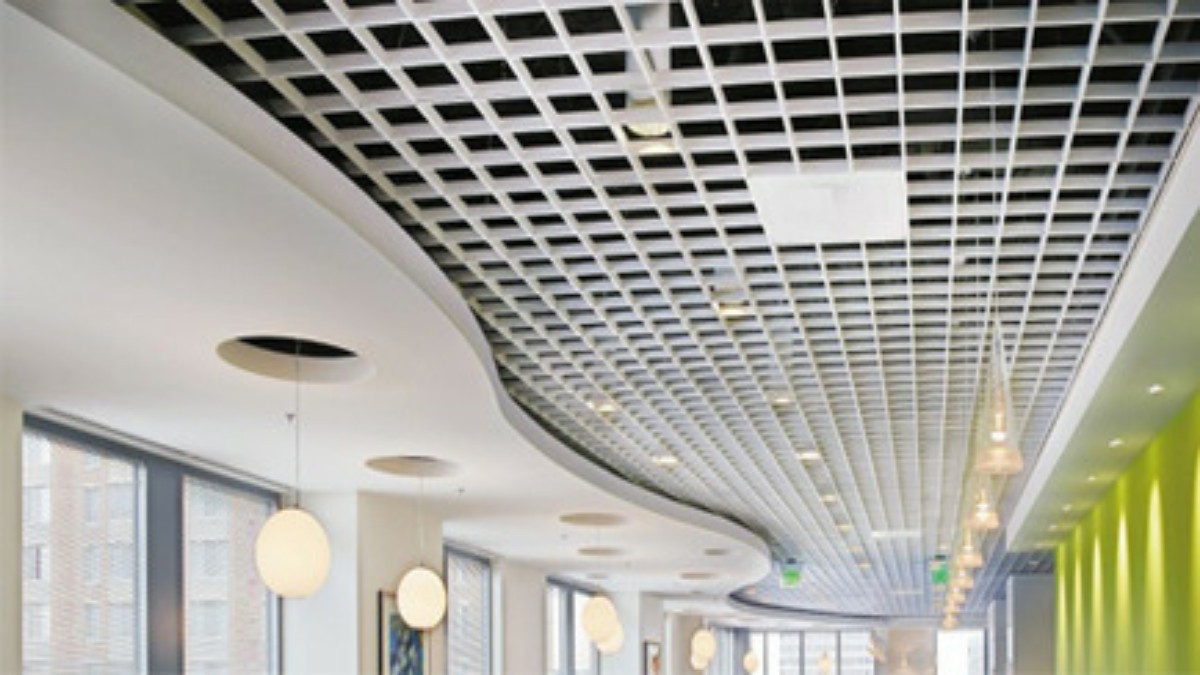A false ceiling is an artificial ceiling done below the main roof of a room or a building. It can also be called a second layer of the roof, hanging from the main roof with the help of suspended support called hangers.
WHAT ARE THE ADVANTAGES OF PROVIDING FALSE CEILING IN BUILDINGS?
The main advantages of providing false ceilings are.
a) The false ceiling improves the aesthetic appearance of interior spaces.
b) By providing a false ceiling the room height can be proportionally reduced and can make us feel more compact and pleasant.
c) False ceilings act as heat insulators and reduce the air conditioning load. The air gap between False ceiling and roof acts as a nonconducting medium that can control heat transmissions to the room. Less heat /cold transmission can reduce power bills.
d) A false ceiling hides air condition ducts, fire sprinkler lines, wiring for concealed light systems, security systems, etc. and provides an excellent look to the ceilings.
e) Additional ceiling lights can be provided in the false ceiling. On providing additional lights in the right places ambient lighting inside the rooms can be improved drastically.
f) A false ceiling acts as an acoustic insulator and function as a noise reduction medium (mainly in auditoriums and movie halls)
g) False ceiling can provide fire protection as the materials constituting false ceiling are mostly fire rated.
h) False ceiling is economical and easy to install and any damages can be rectified in parts.
False ceiling can be differentiated into many types based on the location of application, the material used, appearance, and visibility.

Metal ceilings are architectural features consisting of a ceiling finished with metal plates with patterns pressed into them. False ceilings frequently use metals like galvanized iron, steel, and aluminium. Metal ceiling tiles have long been employed in the building. Most of its applications are in non-residential structures like businesses, schools, airports, hospitals, hotels, and shopping centers.
Read more

Metal False ceiling using Galvanised Iron, Steel and Aluminium. Depending on the applications metal false ceiling are divided into Clip In tiles,Lay in tile
Read more

An artificial ceiling below the main roof of a room or a building is known as a false ceiling. False ceilings are second layer roofs, hanging from the main roof on suspended hanger supports. False ceilings provide an attractive and aesthetically pleasing look on the roofs. This article is about the top 7 trending materials for false ceilings.
Read more

Types of false ceilings, materials to be used and their selection are one of the most difficult challenges anyone should face when planning a new structure or restoring an existing one. The false ceiling materials should be durable and meet the requirements of the application locations. Ceiling systems are of numerous types for home interiors. False ceilings are classified in multiple ways based on their applications, materials used, appearance, and visibility. The most frequent categorisation, however, is based on the materials employed.
Read more




